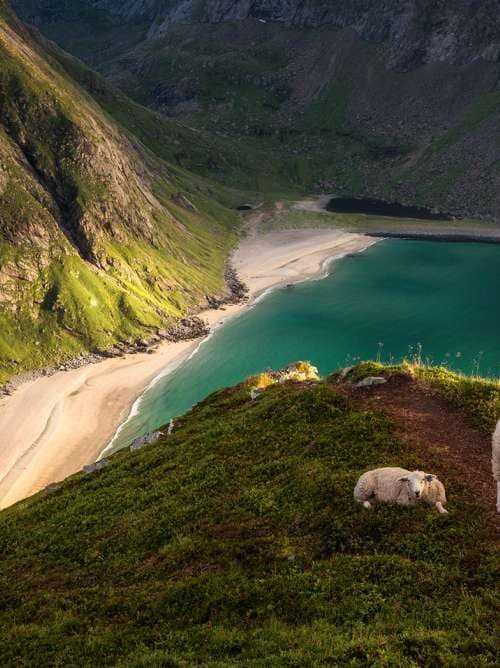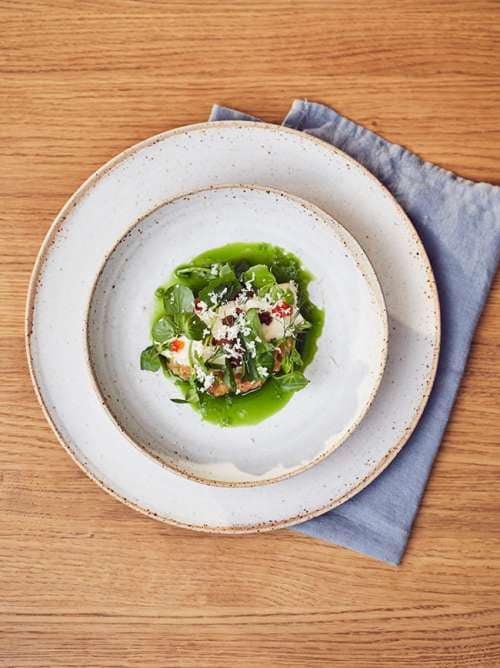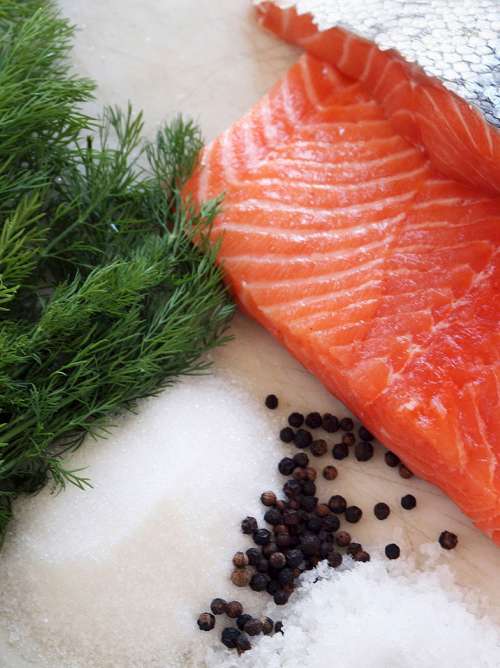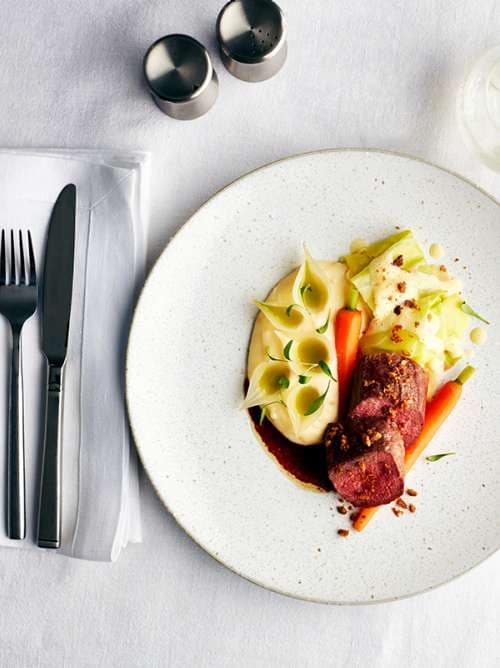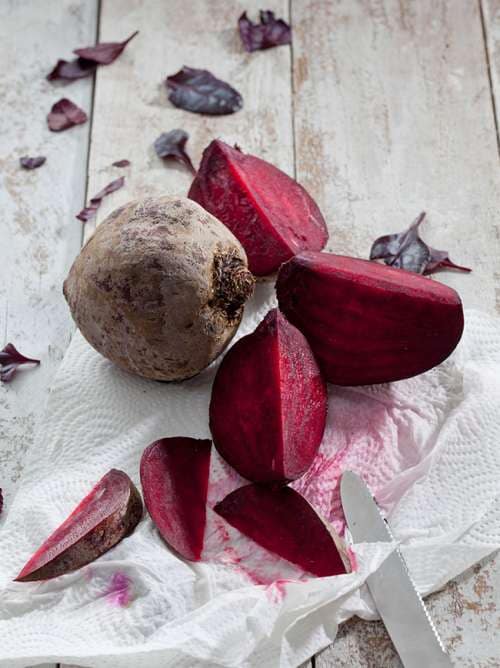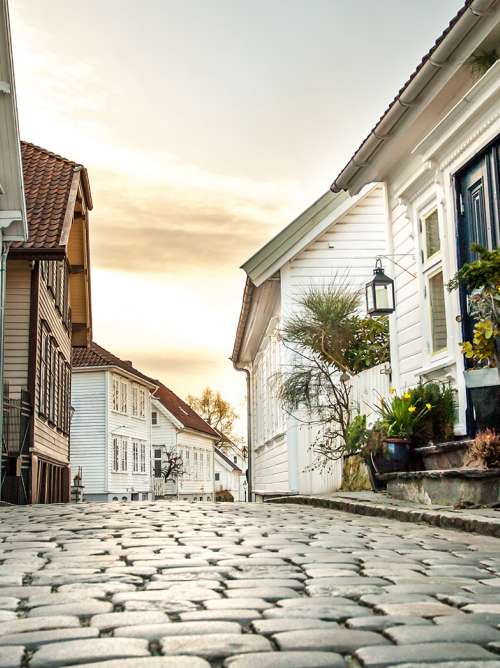Q&A with Kjartan Skjelde
Working with P&O Cruises in a new Local Food Heroes partnership, award-winning Norwegian chef Kjartan Skjelde is creating a six-course fine dining taster menu in The Epicurean, exclusive to Iona. He’s also joining forces with P&O Cruises Food Hero Marco Pierre White to create a unique foodie experience on shore in Norway. We speak to the celebrity chef behind Stavanger’s acclaimed Fish & Cow and Tango restaurants to explore Norway’s exciting dining scene, the importance of food provenance and his plans to bring fresh Norwegian flavours to Iona’s guests.
What sets Norwegian cuisine apart from other cuisines of the world?
Historically, this is a land of ice and cold. So, our food traditions lie in salting and preserving and smoking to survive the long winters. It’s what we’re really good at – think about our salt cod, trout, and salted and smoked lamb. But now, there is a new wave of innovation in the kitchen and we’re realising the importance of creating a strong identity. France and Italy, for example, have such strong traditions and ways of working with ingredients. That’s what the new Norwegian – new Nordic – kitchen is now doing. We’re creating new food traditions and food culture using old techniques and native ingredients.
How does Norway’s landscape shape its cuisine?
Norway is a very long country with an incredible range of climates. Our coastline is enormous, and we also have all the mountains and fjords. Overall, only about eight per cent of the landscape is cultivated. The climate influences what you can grow. In the south, we grow vegetables all year round and can farm livestock. In the north it’s much colder so these things are much harder, but you get the best fish. Where we can grow and cultivate, producers and chefs are doing so much more and getting better with a wider variety of native produce. We’re much more focused on what the wildness of Norway can give us. And we respect the seasons and nature. Here, the season for vegetables, wild berries and fruits is short. Seafood has a short season, too. The best cod, skrie, isn’t available all year round. The high season is for two months in spring, when the young cod migrates all the way up to the faster water of the Finnmark coast and towards Russia. It’s probably the best fish in the world.
Why is it important to work with local ingredients?
As a chef, flavour is the most important thing. I realised this 16 years ago when I first tried a mango fresh from the tree in Brazil. I’d tried mango before, but not like this. It was so juicy. It had such a fresh, beautiful flavour. It was totally different. That’s when I realised you can’t fight nature when it’s about flavours. Local ingredients are key. Take Jerusalem artichokes: there’s a huge difference in flavour if I get them from Israel versus if I buy them from Gydas Jordepler, a little farm located in Hommersåk outside Stavanger. Local food gets on your plate faster and the aroma and flavour are totally different. I have my own picker and he brings in fresh mushrooms every day. That’s how I’m sure I have the best flavour.
What are your favourite ingredients?
I love Norwegian asparagus – it has a fantastic texture and the flavour is sweet and concentrated. And I love Norwegian seafood – skrie is beautiful, and we have amazing crayfish, lobster and shrimp. Everything has its season and I love that. You really look forward to things. Right now, I can see the small wild herbs starting to grow outside. I’m so excited to bring local Norwegian flavours to guests on Iona through the dishes I’ll be creating in The Epicurean.
How do fish and meat influence your work?
Because our coastline is so long, fish is something that is readily available. But you need to understand fish and how to prepare it. Fresh fish is something that we chefs have been developing over the years. As a nation, we have grown up with dried fish. Now we are seeing the possibilities of fresh fish and different ways of preparing it. With meat, I’m working closely with a co-operative of small local producers to produce lamb for the dishes for P&O Cruises. The lambs graze on the salt marshes for a long time, eating the salty grass that is full of minerals. This gives the meat a special complexity of flavour.
Tell us about your tasting menu at The Epicurean in Iona.
With the tasting menu, guests will get a real sense of where the food is from. It’s about giving people a sense of place and of the region’s identity. I’m bringing in some Norwegian traditions of cooking so they will be immersed in the flavours of Norway and be left with a feeling of eating as if in Norway. I’ve started work on the main ingredients, such as the salt-marsh lamb. I really want to serve a beetroot dish and am working with a farm on a little island to make sure I get the beetroot the way I want it for everyone to try. The beetroot gets pickled, which is an old Norwegian cooking method that brings out the natural fruitiness and makes it the perfect base for a cold vegetarian dish.
For the trout dish, the trout is from a lake in the mountains where the fish has grown up and exercised. Like the lamb, it has an identity and a different flavour that comes from where and how it was produced. I hope guests will finish eating and say, ‘Wow! That was a fantastic meal’.
You and Marco Pierre White will be bringing guests on a foodie-themed shore experience in Stavanger. How does it feel to be working with the godfather of British cooking?
I used to work in London and at the time Marco Pierre White was this revolutionary guy who was making really big changes and taking cuisine to a different level. To us young chaps, he was God. Last summer, I had an interview with a national newspaper and they asked me, ‘Who would you most like to have dinner with?’ and I replied Marco. Three months later, P&O Cruises got in touch asking if I wanted to join him for new food experiences in Norway [available on Britannia from 2019]. I believe in karma.
It’s going to be exciting to show people Norwegian cuisine. I’ll introduce the ethos of using fresh, seasonal produce at my restaurant Fish & Cow. Then Marco takes the group to a local farm to pick fresh ingredients. After, we come together to show guests how to use these ingredients to make something fine. They have a go, too, and we enjoy this delicious lunch together. It’s the best way to understand our way of eating.
What makes you most proud of Norway’s food culture?
As a chef of the new Nordic kitchen, I see the possibilities of what nature gives us. I’m conscious of how we are using our knowledge to do things in a different way. There are so many great ingredients that inspire Norwegians to eat well. People are conscious that you can go out and eat fresh produce. And chefs and producers are joining forces to create a food identity that is inspiring. It’s hard to explain. It’s like there is a national consciousness. I’m very proud of this.



